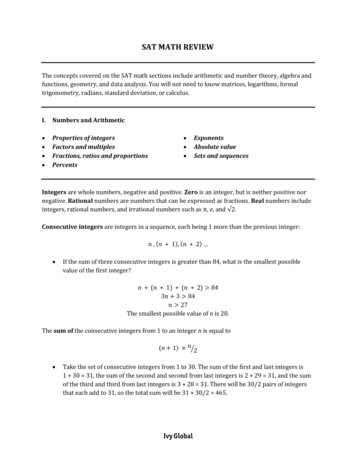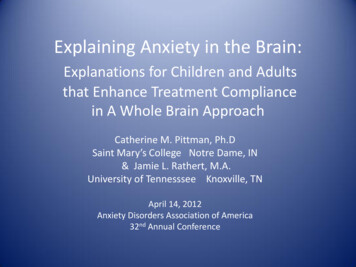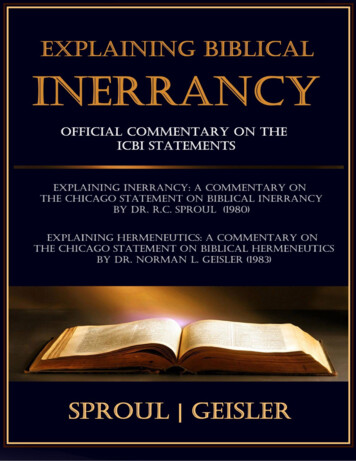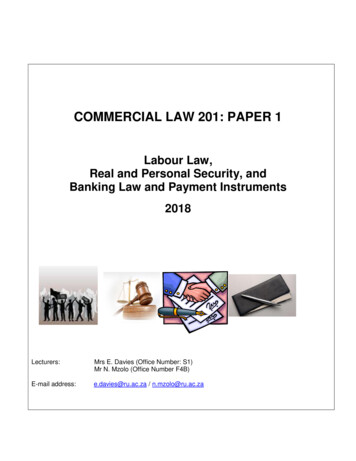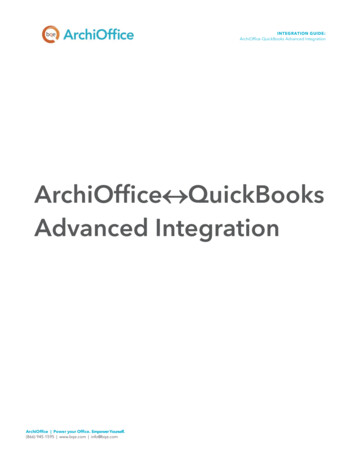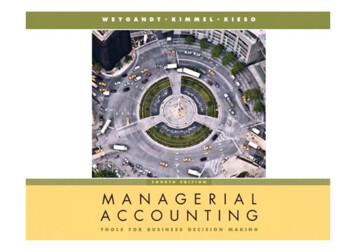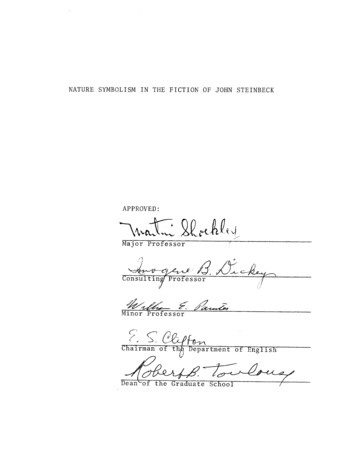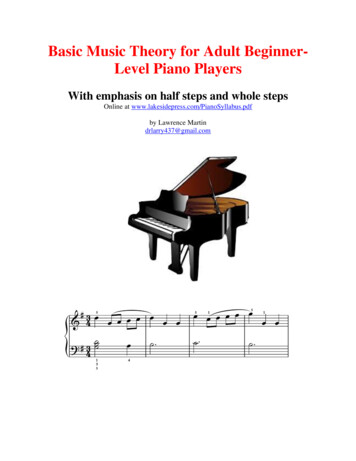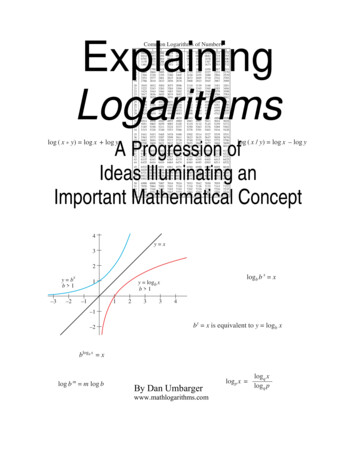
Transcription
ExplainingLogarithmsCommon Logarithms of NumbersN10111213140120000 0043 00860414 0453 04920792 0828 08641139 1173 12061461 1492 05151855315478649285065519853284800 4814 48294942 4955 49695079 5092 51055211 5224 52375340 5353 542835363738395441 5453 5465 5478 54905563 5575 5587 5599 56115682 5694 5705 5717 57295798 5809 5821 5832 58435911 5922 5933 5944 69026542 6551 6561 65716637 6646 6656 66656730 6739 6749 67586821 6830 6839 68486911 6920 6928 7396A Progression ofIdeas Illuminating anImportant Mathematical Conceptlog ( x * y) log x log 6log ( x / y) log x – log y4y x32xy bb 1–3–21–1logb b x xy logb xb 112334–1–2by x is equivalent to y logb xblogb x xlog b m m log bBy Dan Umbargerwww.mathlogarithms.comlogp x logq xlogq p
DedicationThis text is dedicated to every high school mathematics teacher whose high standards and sense ofprofessional ethics have resulted in personal attacks upon their character and/or professional integrity.Find comfort in the exchange between Richard Rich and Sir Thomas More in the play A Man For AllSeasons by Robert Bolt.Rich: “And if I was (a good teacher) , who would know it?”More: “You, your pupils, your friends, God. Not a bad public, that ”In AppreciationI would like to acknowledge grateful appreciation to Mr. (Dr.?) Greg VanMullem, who authored theawesome freeware graphing package at mathgv.com that allowed me to communicate my ideas throughmany graphical images. A picture is truly worth 1,000 words.Also a big “Thank you” to Dr. Art Miller of Mount Allison University of N.B. Canada for explainingthe “non-integer factoring technique” used by Henry Briggs to approximate common logarithms to anydesired place of accuracy. I always wondered about how he did that! Four colleagues, Deborah Dillon,Hae Sun Lee, and Fred Hurst, and Tom Hall all graciously consulted with me on key points that I wasunsure of. “Thank you” Paul A. Zoch, author of Doomed to Fail, for finally helping me to understand theparallel universe that we public high school teachers are forced to work in. “Thank you” Shelley Cates ofthetruthnetwork.com for helping me access the www. And the biggest “Thank you” goes to John Morrisof Editide (info@editide.us) for helping me to clean up my manuscript and change all my 200 dpi figuresto 600 dpi. All errors, however, are my own.Copyright 2006 by Dan Umbarger (Dec 2006)Revised, June 2010Single copies for individuals may be freely downloaded, saved, and printed for non-profit educational purposes only.Donations welcome!!! Suggested donation 6 students ages 1-18, 12 adults 19 and above. See mathlogarithms.com.Single and multiple bound copies may be purchased from the author at mathlogarithms.comor Dan Umbarger7860 La Cosa Dr.Dallas, TX 75248-4438
ExplainingLogarithmsA Progression ofIdeas Illuminating anImportant Mathematical ConceptBy Dan Umbargerwww.mathlogarithms.comBrown Books Publishing GroupDallas, TX., 2006John Napier, Canon of Logarithms, 1614“Seeing there is nothing that is so troublesome to mathematical practice, nor doth more molest and hinder calculators, thanthe multiplications, divisions, square and cubical extractions of great numbers, which besides the tedious expense of time arefor the most part subject to many slippery errors, I began therefore to consider in my mind by what certain and ready art Imight remove those hindrances .Cast away from the work itself even the very numbers themselves that are to be multiplied,divided, and resolved into roots, and putteth other numbers in their place which perform much as they can do, only by additionand subtraction, division by two or division by three.”As quoted in “When Slide Rules Ruled” by Cliff Stoll, Scientific American Magazine, May 2006, pgs. 81
Table of ContentsForeword. iiNote to Teachers . vChapter 1: Logarithms Used to Calculate Products . 1Chapter 2: The Inverse Log Rules . 9Chapter 3: Logarithms Used to Calculate Quotients . 20Chapter 4: Solving for an Exponent—The General Case . 25Chapter 5: Change of Base, e, the Natural Logarithm . 29Chapter 6: “When will we ever use this stuff?” . 37Chapter 7: More about e and the Natural Logarithm . 56Chapter 8: More Log Rules . 66Chapter 9: Asymptotes, Curve Sketching, Domains & Ranges . 69Chapter 10 Practice, Practice, Practice . 76Appendix A: How Did Briggs Construct His Table of Common Logs? . 85Appendix B: Cardano’s Formula—Solving the Generalized Cubic Equation . 93Appendix C: Semilog Paper . 94Appendix D: Logarithms of Values Less than One . 95Appendix 2.71818: Euler’s Equation, An Introduction .96Appendix F: Exponents, Powers, Logarithms What’s the difference?. . . 99Answers: . . . . . . . . . . . . . . . . . . . . . . . . . . . . . . . . . . . . . . . . . . . . . . . . . . . . 100i
ForewordMany, if not most or all, high school math and science teachers have had the experience of hearing astudent exclaim something comparable to the following: “234 4,192 8,219 because the calculator saidso.” Clearly the magnitude of such a product should have at least 5 places past the leading digit, 200 4,000 800,000 2 zeros 3 zeros 5 zeros, etc. That’s not “rocket science.” While only a savant canperform the exact calculation above in their heads most educated people can estimate simple expressionsand “sense” when either bad data was entered into the calculator (GIGO—garbage in, garbage out) or thatthe order of operation for an expression was incorrectly entered. Similarly I have read of an experimentwhereby calculators were wired to give answers to multiplication problems that were an order ofmagnitude off and then given to elementary students to see if they noticed the errors. They didn’t.What is happening here? Many people would say that the culprit is the lack of number sense in ouryoung people. They say that four-function calculators are given to students too early in the grade schoolbefore number sense is developed. There is a school of thought that abstraction, a component of numbersense, must be developed in stages from concrete, to pictorial, to purely abstract. Learning that 5 2 7needs to start with combining 5 coins (popsicle sticks, poker chips, etc.) with 2 coins resulting in 7 coins.From that experience, the student can proceed to learn that the photographic/pictorial images of 5 coins(popsicle sticks, poker chips, etc.) combined with the photographic/pictorial images of 2 coins results in 7coin images. Similarly, 5 tally marks combined with 2 tally marks results in 7 marks. Finally, oneinternalizes the abstraction 5 2 7 concrete, pictorial, abstraction concrete, pictorial, abstraction.Giving calculators too early in an attempt to shortcut the learning progression robs the student of thechance to learn or internalize number sense. The result of not being required to develop number sense andnot memorizing the basic number facts at the elementary school level manifests itself daily in upperschool math and science classrooms. There are people responsible who should know better. An “expert”for math curriculum for a local school district attaches the following words of wisdom to every emailmessage she sends: “Life is too short for long division!!” but I won’t even go there.Calculators make good students better but they do not compensate for a lack of number senseand knowing the basic number facts from memory. They do not make a poor math student into agood one!The introduction of the handheld “trig” calculator (four operations combined with all the trig and logand exp functions) into the math curriculum has had similar impact on the student’s ability to learnconcepts associated with logarithms. Thank the engineers at HP and TI for that! Life is too short to spendon log tables, using them to find logs and antilogs (inverse logs), and interpolating to extend your logtable decimal value from four positions out to five! Yuck! However, by completely eliminating thetraditional study of logarithms, we have deprived our students of the evolution of ideas and concepts thatleads to deeper understanding of many concepts associated with logarithms. As a result, teachers nowcould hear“(5.2)y 30.47, y 6.32 because the calculator says so,” (52 25 for goodness sakes!!)or “y log4.8 (714.6), y 22.9 because the calculator says so.” (54 625, 55 3125!!)ii
Typically, today’s students experience teachers incanting: “The log of a product is the sum of thelogs.” “The log of a quotient is the difference of the logs.” The students see the rules1.) log(a b) log a logb or a log log a logb or2.) b 3.)logb m mlogbwith little development of ideas behind them or history of how they were used in conjunction with logtables (or slide rules which are mechanized log tables) to do almost all of the world’s scientific andengineering calculations from the early 1600s until the wide-scale availability of scientific calculators inthe 1970s. All three of these rules were actually taught in Algebra I, but in another format. Little effort ismade in textbooks to make a connection between the Algebra I format (rules for exponents) and theirlogarithmic format. It is just assumed that the student sees and understands the connection. With the useof log tables and slide rules there was a daily, although subtle, reminder of the connection between thesethree rules and their parallel Algebra I “Rules of exponents.”Algebra 1 Rulembbmn*b bn/b bm n(b ) bmnm nm-nAssociated Log Rulelogb(m * n) logb m logb nlogb(m / n) logb m - logb nlog bm m log b“Black-box” calculator programming has obscured much of this connection. As a result, the progressionof ideas associated with logarithms that existed for hundreds of years has been abbreviated. For reallybright students, the curricular changes have not been a problem. For some students, however, the resulthas been confusion.Let me give you a specific example. The following quote is taken verbatim .html (website viable June., 2010)The Math Forum, “Ask Dr. Math.” “I have a bunch of rules for logs, properties and suchlike, but I find ithard to remember them without a proof. My precalculus book has no proof of why logs work or even whatthey are, nor does my calculus book. I understand what logs are but I don’t understand why they arewhat they are. Please help me.”This plea for help is from a calculus student who (presumably) has credit on their transcript for masteryof precalculus!! Yet, clearly he or she does not even know enough about logarithms to articulate aquestion regarding what they would like to know.My all time favorite magic log formulas are :x1.) logb b xlog xand 2.) b b xiii
Where did those two formulas come from? There is some pretty simple logic behind these mysteriousidentities but teachers are always in a hurry to get to the “good stuff” applying the rules to solveexponential equations with variable exponents. They don’t have time or take the time to develop andexplain these “rules”. And most books are not helpful with their terse presentation of these ideas. Theseformulas are still vital even today. The calculator has not made them obsolete in the way that the fourfunction calculator has rescued us from the tyranny of the log tables and all the drudgery associated withthem. Without these formulas we cannot knowledgeably use our scientific calculators to solve equationsof the form (5.2)y 30.47 or y log4.8 (714.6). If the student does not understand the log rules, then he orshe can still apply them and “get answers” just like the teacher. But unlike the teacher, some studentsreally do not understand what is happening. If they make a severe error in their work they do not have thenumber sense that will enable them to catch unreasonable answers and they will be baffled in a later mathclass when the topic comes up again. Chapter 2 is totally dedicated to understanding these two laterrules.All the formulas shown above just seem to appear in the math books like “Athena jumping out of thehead of Zeus” deus ex machina!!! There is none of the development of ideas and evolution of thoughtthat used to exist in the high school curriculum. The high school pre-calculus teacher may understandfully what is going on with these formulas and ideas and the class genius may also but Joe Shmick andBetty Shmoe do not! Many students are just sitting there working with abstractions that have not beendeveloped and fully understood. It’s all magic magic formulas and magic transformations. They arebuilding “cognitive structures” without proper foundations.When students do not fully understand mathematical ideas they tend to quickly forget all thetricks that got them past their unit test and that “knowledge” is not there when a later math teacherasks them to recall and apply it. Also they do not have the number sense to know when theiranswers are not reasonable.Mathemagic is the learning of tricks that help a student to pass their immediate unit test. Mathemagicis confusing and quickly forgotten. Mathemagic is rigid. All problems that a student can solve usingmathemagic must be in the exact same format as the problems the teacher used when teaching the unit.Mathematics is the learning and understanding of ideas, theories, and rules that stay with you for yearsor even decades and allow you to attack and solve problems that are not in the exact same format as theproblems the teacher solved when teaching the material. Mathematics is a disciplined, organized way ofthinking.If a student fully understands the ideas behind working with logarithms, then correct answers, comfortwith logarithmic situations, and multiyear retention will result. This is not an if-and-only-if relation. If astudent can get correct answers on her/his immediate unit test that does not mean that s/he understood theconcepts or that retention will occur so that the necessary recognition and skills will be there for thestudent should a future occasion (math, science, and business classes) require them.The omnipresence of scientific calculators today means that even most teachers have not experiencedthe joys of working with log tables or working with a slide rule . For the most part that is good. Iwould not wish my worst enemy to have to learn about logarithms the way I did, using log tables to findlogs and anti-logs and interpolating to tweak out one more decimal value for both. There was also thespecial case situation of using a log table to determine the log of x where 0 x 1. All the preceding wasa real a “pain in the patootie” which we are spared today. The calculator allows us to concentrate on theapplication and not be distracted by the mechanics and minutia of the arithmetic! I do feel, however, thatin the education world there is a need to develop the ideas and history associated with logarithms prior toexpecting the students to work with them. Doing so will replace the mystery of the study of logarithmswith a deep appreciation and understanding of log ideas and concepts that will stay with the student for anextended period of time. That is the motivation behind this material.iv
Note to TeachersThis text is not written for you. With the exception of parts of chapters 5, 6, and 7 and Appendix A, Iassume that you already understand all the ideas presented. This is a book written for students who do notunderstand logarithms even if they can apply the rules and get correct answers. However, it wouldgreatly gratify me if a teacher were to tell me that he or she enjoyed my organization and presentation.I am a high school math teacher, not a mathematician. As such, I live and work in a world wheresequence and progression of concepts leading to key ideas, along with pacing, “anticipatory sets,”evolution and organization of ideas, reinforcement, examples and counterexamples, patterns, visuals,repeated threading and spiraling of concepts, and, especially, repetition, repetition, and repetition are allmore important than rigor. It has always seemed ironic that authors and teachers, so knowledgeable aboutmathematical sequences, could be so insensitive and clumsy about the sequencing of curriculum howthey could be so knowledgeable about continuity of functions but so discontinuous in their writing.There are plenty of materials available on teaching logarithms that are mathematically rigorous. Ibelieve that “rigor before readiness” is counter-productive for all but the most gifted students. As such, Ipresent many, many examples to help the student to see patterns and only then do I present the abstractionwhich will allow for generalization to all cases. Induction is a powerful teaching tool. Because ofeconomy imposed by the publisher or perhaps because the material is so “obvious” to the authors mosttextbooks present the abstraction (generalization) first with little attempt to develop the rationale behind itor to connect the material to previous material such as the Algebra I Laws of Exponents or the history oflogarithms. Those texts then proceed hurriedly to applying the abstraction to specific situations.I believe that the best way to introduce a new idea is to somehow relate it to previous ideas the studenthas been using for some time. Using this approach, new concepts are an extension of previous ideas alogical progression. Logarithms are a way to apply many of the laws of exponents taught in Algebra I. Itis important that the students understand that!! I also believe in introducing an idea in one chapter andrevisiting that idea repeatedly in different ways throughout the book.The materials presented here are usually spread over two years of math instruction: precalculus andcalculus. Doing so, however, separates ideas and examples that are helpful in the synthesis that leads to adeeper understanding of logarithms. For example, most high school text books seem to shy away from ameaningful discussion of why scientists and other professionals prefer to work with base e, the naturallog, rather than the more intuitive common base, base 10. They do so because the pre-calculus student hasnot yet been exposed to the ideas that are necessary to justify the use of base e. If the goal is “rigor” thenindeed many ideas associated with e must be postponed until calculus. But if your goal is to createfamiliarity with logarithms and appreciation of the number e, I do not believe that all that rigor isrequired. I have tried to bring all those ideas down to the pre-calculus level. I hope that I have done so.My approach, however, has been done at the expense of rigor. If I get consigned to one of the levels ofDante’s Inferno because of my transgression it will be worth it if I am able to help young students pastwhat, for me, was an unnecessarily difficult multiyear journey. When I did make an attempt at “rigor,” Ichose the formal two column proof over the abbreviated paragraph proof.I see three different audiences for this text: 1.) students who have never worked with logarithmsbefore, 2.) those students in calculus or science who did not manage to master logarithms during theiralgebra/pre-calculus instruction, and 3.) summer reading for students preparing for calculus. The formerstudents will need to receive instruction, but the second and third group of students, if sufficientlymotivated, should be able to read these materials on their own with little or no help. There are questions atthe end of each chapter to use to evaluate student understanding. Heavy emphasis is placed uponpracticing estimation skills!!!v
Chapter 1: Logarithms Used to Calculate Products1Chapter 1: Logarithms Used to Calculate ProductsFor hundreds of years scientists and mathematicians did their calculations using the standard approachcurrently taught in elementary school.361 251805722902559 08 555173 .1 13 .0 0312 01 731110731170091etc.etc.Not only were all these calculations tedious and prone to error, but the time spent in doing thosecalculations took away from the tasks requiring those calculations astronomy, navigation, etc. Peoplewere always looking for a way to aid in the calculation process.For now, define logarithms as a technique developed to aid in the drudgery of doing long and tediouscalculations. In 1614, a Scottish mathematician, John Napier (1550–1617), published his table oflogarithms and revolutionized the calculation process. (Joost Burgi, a Swiss watchmaker who interactedand worked with the famous astronomer Johann Kepler, also seems to have independently discoveredlogarithms, but Napier was the first to publish and he is usually given credit for their discovery anddevelopment.) For reasons that are distracting to the flow of ideas in this book, we will instead focus onthe approach to logarithms by English mathematician Henry Briggs (1561–1630) who consulted with andwas inspired by Mr. Napier’s insight and original ideas.The term logarithm is a portmanteau word a word made of two smaller words. In this case,logarithm is made of two Greek words (logos, ratio and arithmos, number). In brief, a logarithm isnothing more than an exponent. In the equation 5y 10 the “y” is a logarithm.Logarithms Used to MultiplyFor years, mathematicians had noticed a certain pattern held for sequences of exponentials with fixedbases.For 345678910Value1248163264 128 256 5121,024Notice that 8 323or5 2562 2 25623 25 28210
Chapter 1: Logarithms Used to Calculate e13927812437292,1876,561ExponentialNotice that 9 24332 2 2,18735 2,18735 37From before 23 25 2832 35 373 orand nowBy induction, we move from the specific to the general:Product of Common Base Factors Rule (rule applies for all m & n)b m b n b(m n)Another way to think of this rule is to apply the definition of exponentiation .m timesDefinition of exponentiation: bm b * b * b * For example:*b(b times itself m times)b4 b3 (b b b b) (b b b) (definition of exponentiation) (associative property of multiplication)b b b b b b b7(definition of exponentiation)bBy transitive b 4 b 3 b 7 or b m b n b(m n)Product of Common Base Factor RuleWhen monomials with the same base are multiplied, one can obtain the result by adding the respectiveexponents. Napier (and later Briggs) saw from this pattern the possibility of converting a complicated,difficult multiplication problem into an easier, far less error-prone, addition problem. For example:4,971.26 0.245910m 10nWhere 10(m n)3 m 4Because104 10,00010m 4,971.26103 1,000and–1 n 0andandand100 110n 0.245910–1 1/10 0.1This approach follows immediately from the pattern noted beforebm bn b(m n)Product of Common Base Factors Rule
Chapter 1: Logarithms Used to Calculate Products3Mr. Briggs devoted a great deal of the last 20 years of his life to identifying those values of y whereby10 x. In the equation 10y x, the exponent y came to be know as the logarithm of the number x using abase of 10, y log10 ( x ). Hence 10y x is equivalent to y log10 x . For example, 10 10(1/ 2) 10 0.5 3.162277. In English “0.5 is the base 10 logarithm of 3.162277.”y10y x is equivalent to y log10 x Equivalent Symbolism RuleAppendix A goes into detail about some of the ingenious techniques Mr. Briggs used to develop hislogarithmic information. The curious reader is referred there because a discussion of those ideas herewould distract from the more important goal of explaining how logarithms were used to convert tediousmultiplication problems into simpler addition problems.Mr. Briggs organized his work into tables. Discussing that organization and adding the newvocabulary words (characteristic, mantissa, antilogarithm) necessary to use the table would also distractfrom the discussion at hand and is mostly omitted from this book. See Appendix A, pg. 1 for a hint.Suffice to say that in the table of logarithms that Mr. Briggs developed was information comparable to thefollowing:Logarithm Exponent .696441101Number11.2222.4594.97110(log10 0 (log10 1.222 (log10 2.459 (log10 4.971 (log10 10 1)0.087)0.39076)0.69644)1)Thus, the problem originally posed can be evaluated as follows:4,971.26 0.24594.97126 103 100.69644 103 10(–1) (scientific notation)100.39076 10(–1) (exponent values taken from table)2.459103.08720 1031,000(bm n o pb b b b(m n o p) ) 100.08720 (see 100.08720 in box above) 1,2221.222 By calculator 4,971.26 0.2459 1,222.432834 which compares very favorably with the answerobtained using Mr. Briggs’ logarithm technique. Three additional thoughts here: 1.) Mr. Briggs’ log tablehad as many as 13 decimal places (more than a TI-83 calculator), which would have made our workgreatly more accurate had we used his raw data. 2.) Scientists and engineers are usually happy with“close” answers as long as the answers are close enough for the work they are doing to succeed. Thenumber 1.414213562 would make most engineers very happy, but for the mathematician only the 2would be acceptable. 3.) There are complications involved in using a log table when finding the log of xwhen 0 x 1. Fortunately, the scientific calculator saves us from having to deal with thosecomplications. See Appendix D if you are curious about this matter.
Chapter 1: Logarithms Used to Calculate Products4Notice the relationship between Briggs’ logarithmic approach to multiplying numbers and the form ofmath called scientific notation.Multiply Avogadro’s number by the mass of an electron. (It’s probably not good science, but it isgood math.) Avogadro’s numbermass of an electron600,000,000,000,000,000,000,000 1023 60.0000000000000000000000000000009 9 10(–31) 54 10(–8) 5.4 10(–7) 0.00000054 kgYour turn. Use your scientific calculator to evaluate the following product using the logarithmictechnique shown on the previous page. Use the button on your calculator to check your work.274,246 0.0005461 10m 10n 10log 274246 10log 0.0005461 (using calculator twice for log m and log n)10(log 274246 log 0.0005461) Product of Common Base Factors Rulebm bn b(m n)etc., use your calculator to finish and check(Using a log table to obtain the log of a number less than one (1) involves some ideas that used to be very important but whichare all dealt with now by the black-box code inside those marvelous scientific calculators. For a more complete discussion,please see Appendix D.)Evaluate using the rule bm bn b(m n). Use a calculator to determine necessary logs. Check your work.1.)3,451,234 9,871,298,345 2.)56,819,234,008 0.004881234 3.)0.00003810842 0.000000089234913 It is important to make a connection between the Product of Common Base Factors Rule and a new rulethat will be called the Log of a Product Rule:andbm bn b(m n)Product of Common Base Factors Rulelog(x y) log x log yLog of a Product RuleThese rules are two different forms of the same idea. The latter simply states that if two numbers x and yare being multiplied, they can both be expressed as exponentials with a common base. Once the exponentsof the respective factors are added, the resulting exponent can be used to determine the result of theoriginal problem by using that exponent sum as a power (antilog or inverse) of the common base. On thecalculator, the antilog or inverse button is marked 10x. We use symbols to avoid convoluted statementslike these!a b 10(loga logb)
Chapter 1: Logarithms Used to Calculate ProductsBy Product of Common Base Factors Rule50.6989710 By Log of a Product Rule x5 7 x0.84509 x
Common Logarithms of Numbers N 0 1 2 34 56 7 8 9 10 0000 0043 0086 0128 0170 0212 0253 0294 0334
